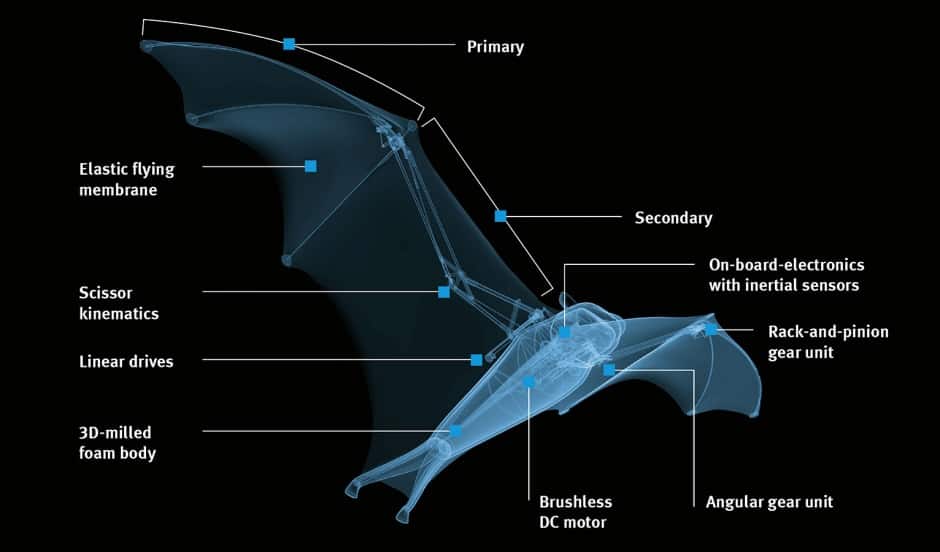The robot was developed by the group’s Bionic Learning Network, a cross-disciplinary group of scientists and engineers tasked with developing a handful of concepts each year, in order to explore concepts that may help shape manufacturing in the future.
The firm typically unveils the fruits of these labours ahead of each year’s Hannover Messe. Previous creations have included robot ants, penguins, kangaroos, seagulls and jellyfish.
The latest device closely mimics the unusual flying characteristics of the flying fox, which is one of the only mammals capable of flight. One particular feature of this species is a fine elastic membrane that stretches from the extended metacarpal and finger bones down to the foot joints.
In flight, the animals control the curvature of the flying membrane with their fingers, allowing them to move aerodynamically and agilely through the air. They thereby achieve maximum uplift, even when performing slow flying manoeuvres.
With a wingspan of 228cm and a body length of 87cm, the artificial flying fox weighs just 580g. The object is able to move semi-autonomously in a defined airspace thanks to a combination of the integrated on-board electronics with an external motion-tracking system,

Like the natural flying fox, its wing kinematics are also divided into primaries and secondaries and covered with an elastic membrane, which continues from the wings down to the feet. This makes its wing area relatively large, allowing a low area loading. As with the biological model, all the articulation points are on one plane, meaning that the BionicFlyingFox can control and fold its wings together individually.
According to Festo the model’s flying membrane is wafer-thin, ultralight but also robust. It consists of two airtight films and a knitted elastane fabric, which are welded together at approximately 45,000 points. Due to its elasticity, it stays almost uncreased, even when the wings are retracted. The fabric’s honeycomb structure prevents small cracks in the flying membrane from getting bigger. This means that the BionicFlyingFox can continue flying even if the fabric sustains minor damage.




Project to investigate hybrid approach to titanium manufacturing
What is this a hybrid of? Superplastic forming tends to be performed slowly as otherwise the behaviour is the hot creep that typifies hot...